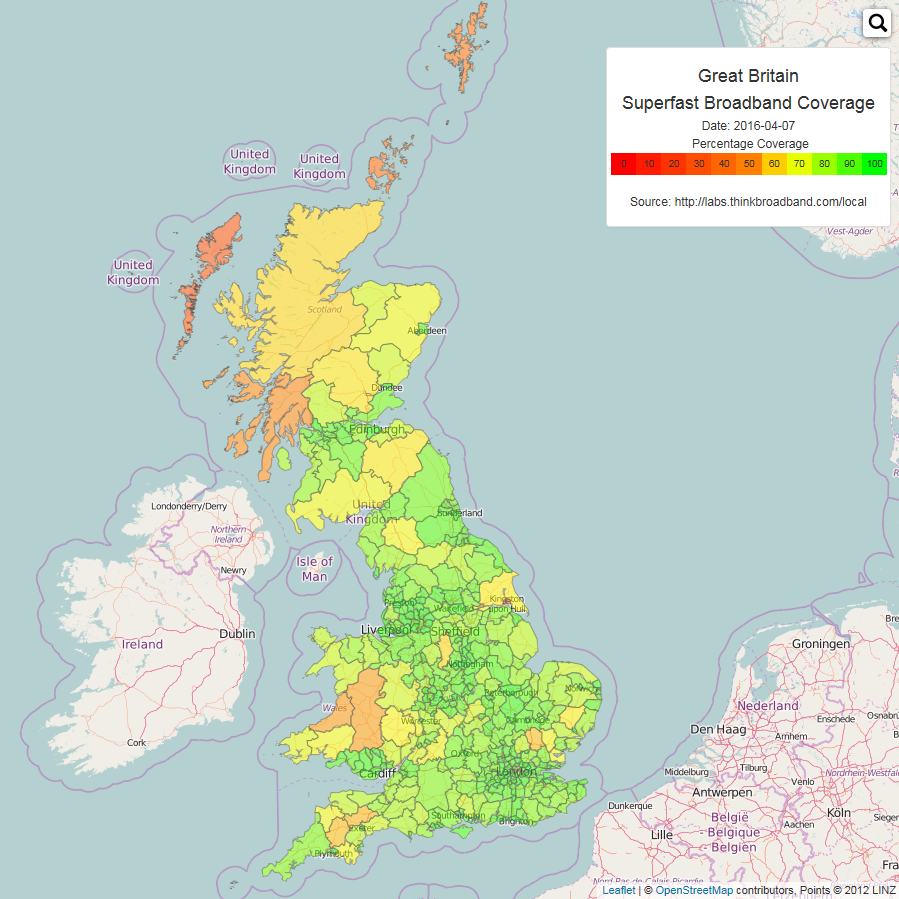UK hits 90% superfast broadband target
New data reveals that the UK has been able to reach 90% of homes with superfast broadband connections.
However, given the pace of progress with technology, this now appears to be a minor achievement. The target was actually set back in 2010 with the aim of giving the UK “the best superfast broadband in Europe” by last year. These targets were modified when there were delays in the roll-out of rural fibre connections. The target moved to 95% by 2017.
The data, provided by Thinkbroadband. states that the 95% target should be reached easily by next year, but there are some issues. One problem is that 10% of the population is still waiting for a connection to superfast broadband. Additionally, there is still some confusion on what superfast broadband actually is.
Both Ofcom and Thinkbroadband use 24Mbps as a benchmark, and in 2010, that was a fairly fast speed. When compared with other European countries, the provision of this speed looks very good. However, broadband campaigners believe that there is a danger of the current network not being enough for future speeds. They want to use FTTH (fibre to the home) connections as a benchmark, and this would mean that the UK is trailing the rest of Europe.
FTTH at the present time is only available to 1.56% of properties in the UK, but most European countries are using it as standard. In Hull, more than 37% of homes have FTTH, and the slow roll-out of this service may be forgiven as residents will eventually have access to much faster connections than are available in other UK cities.

